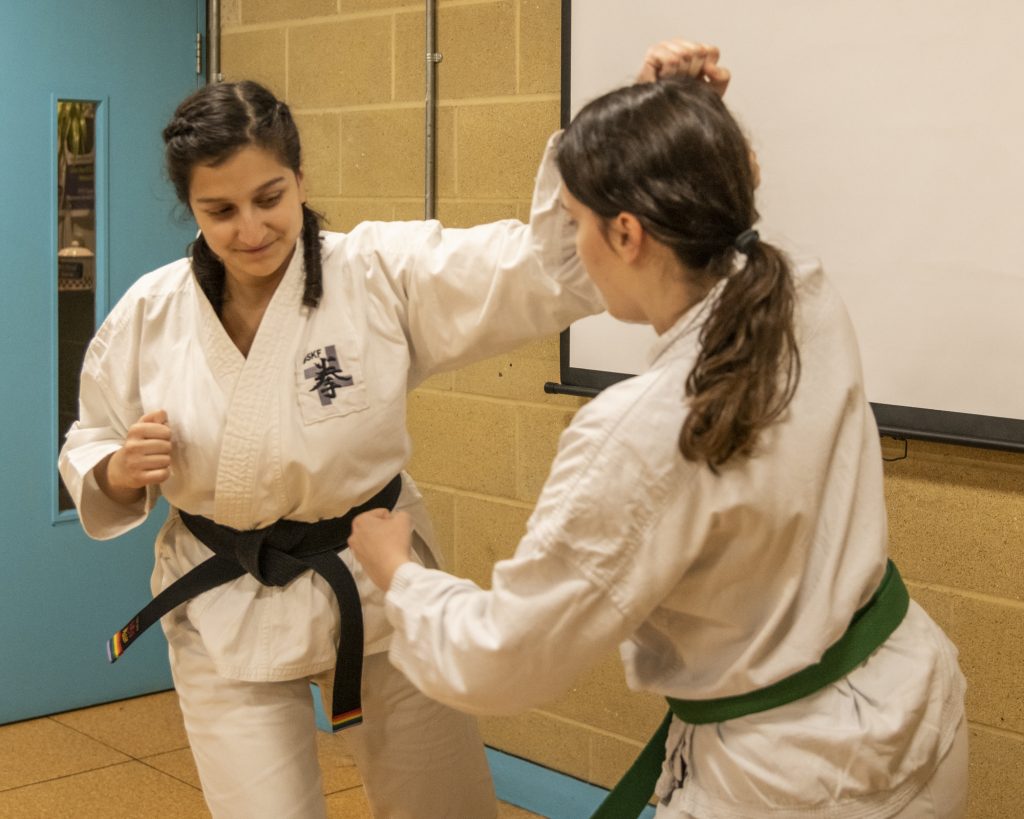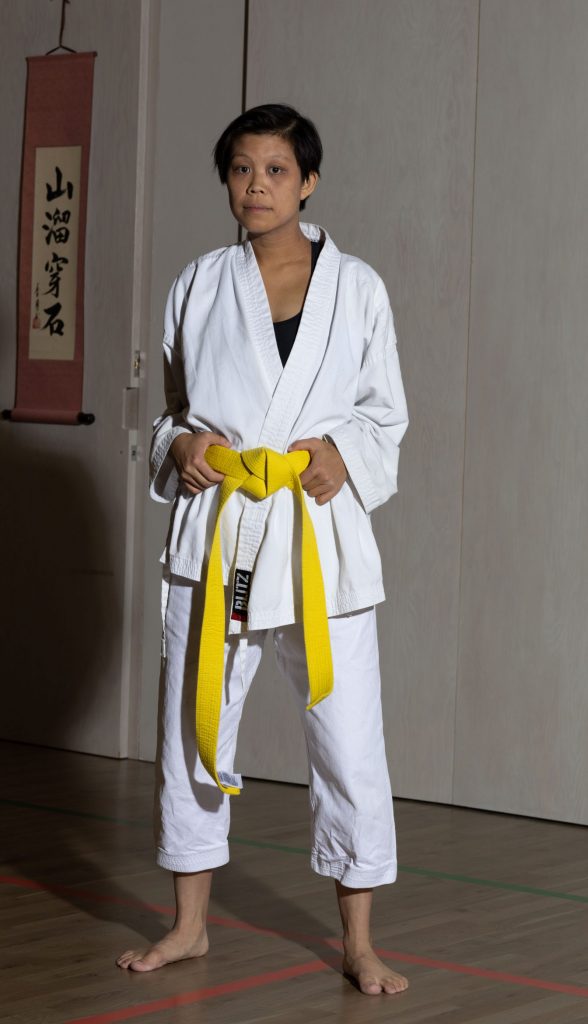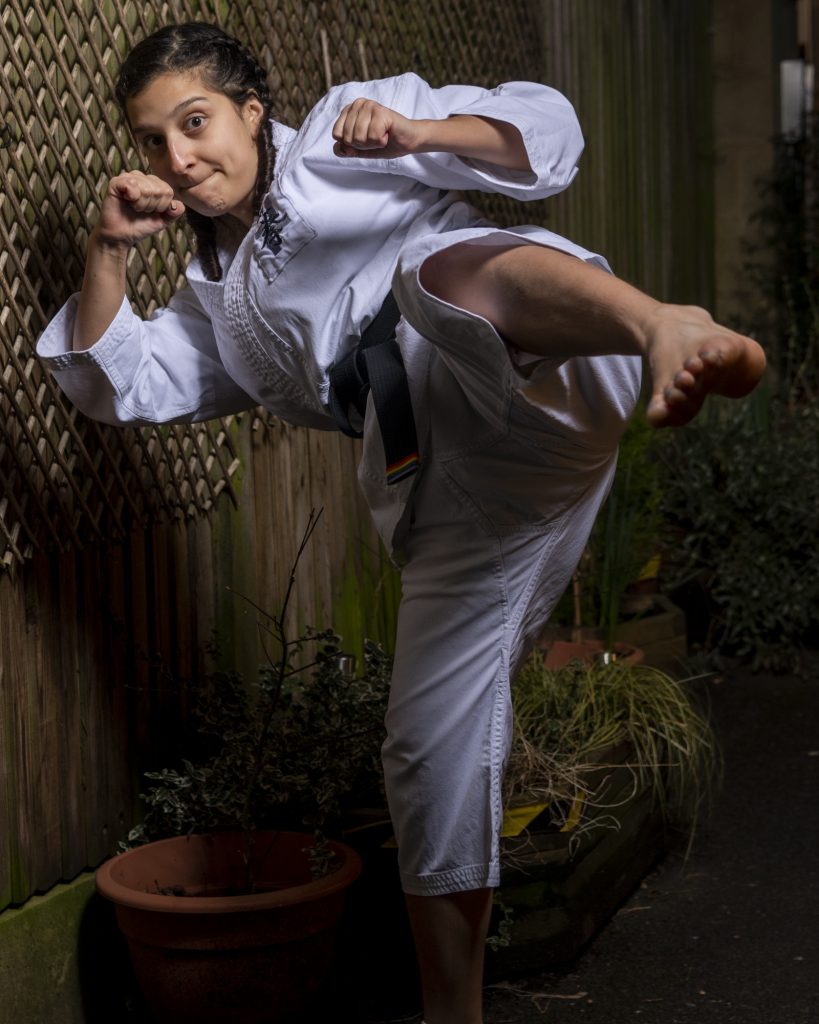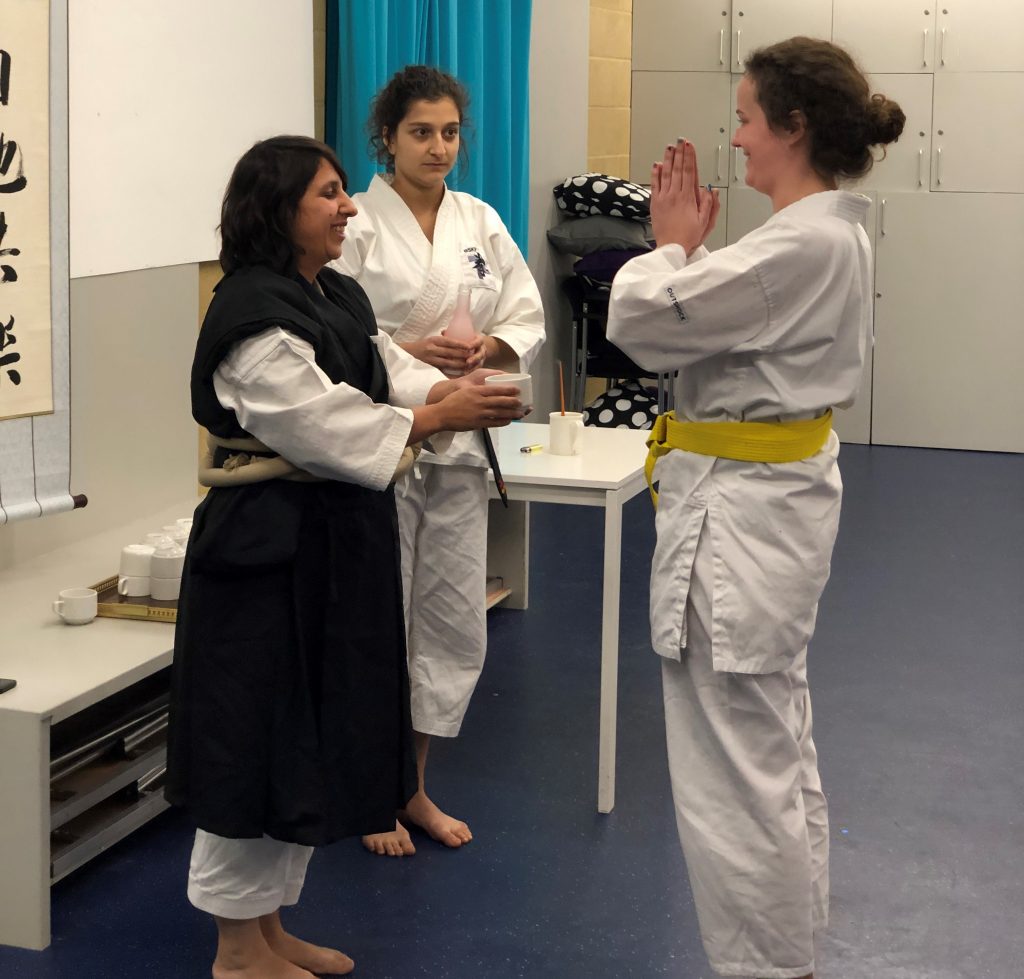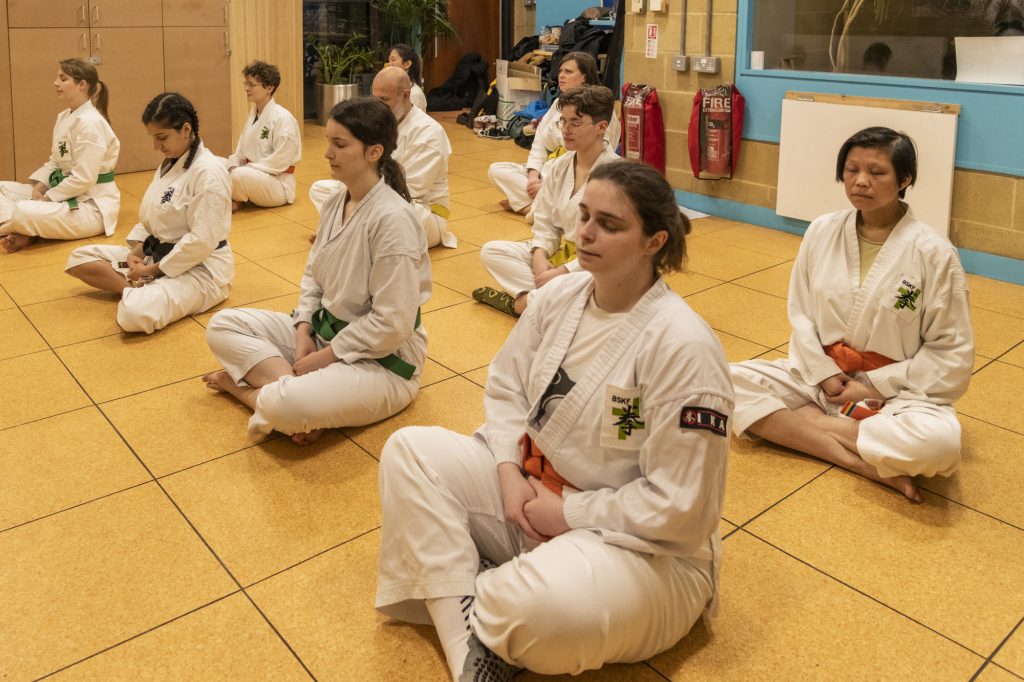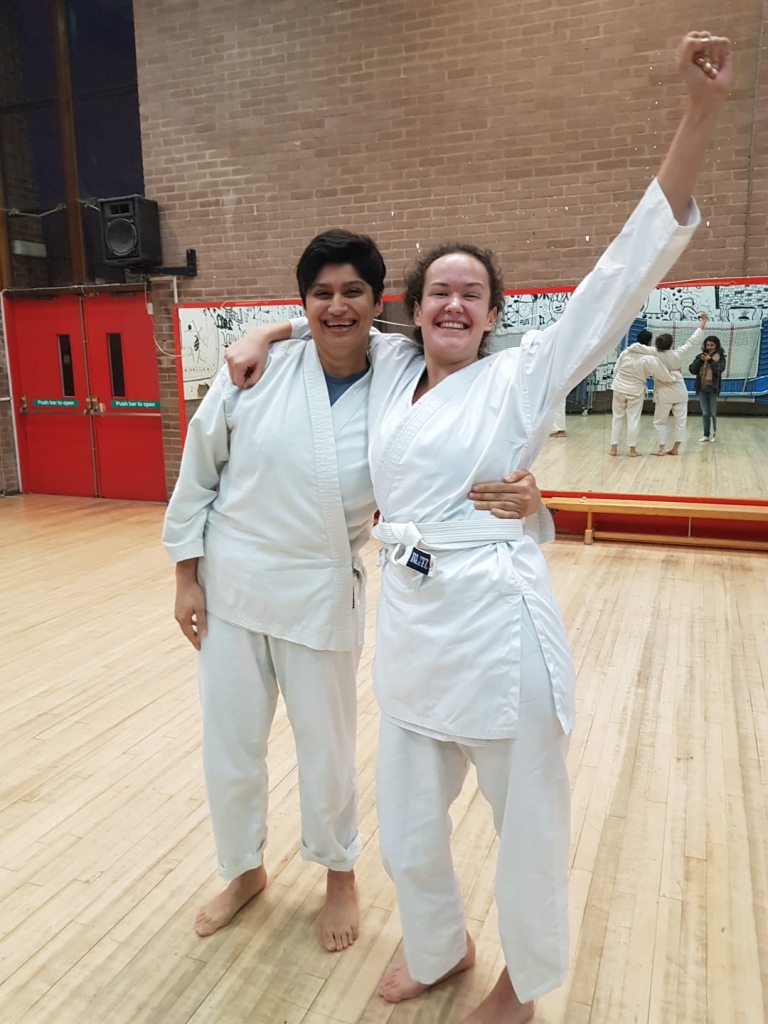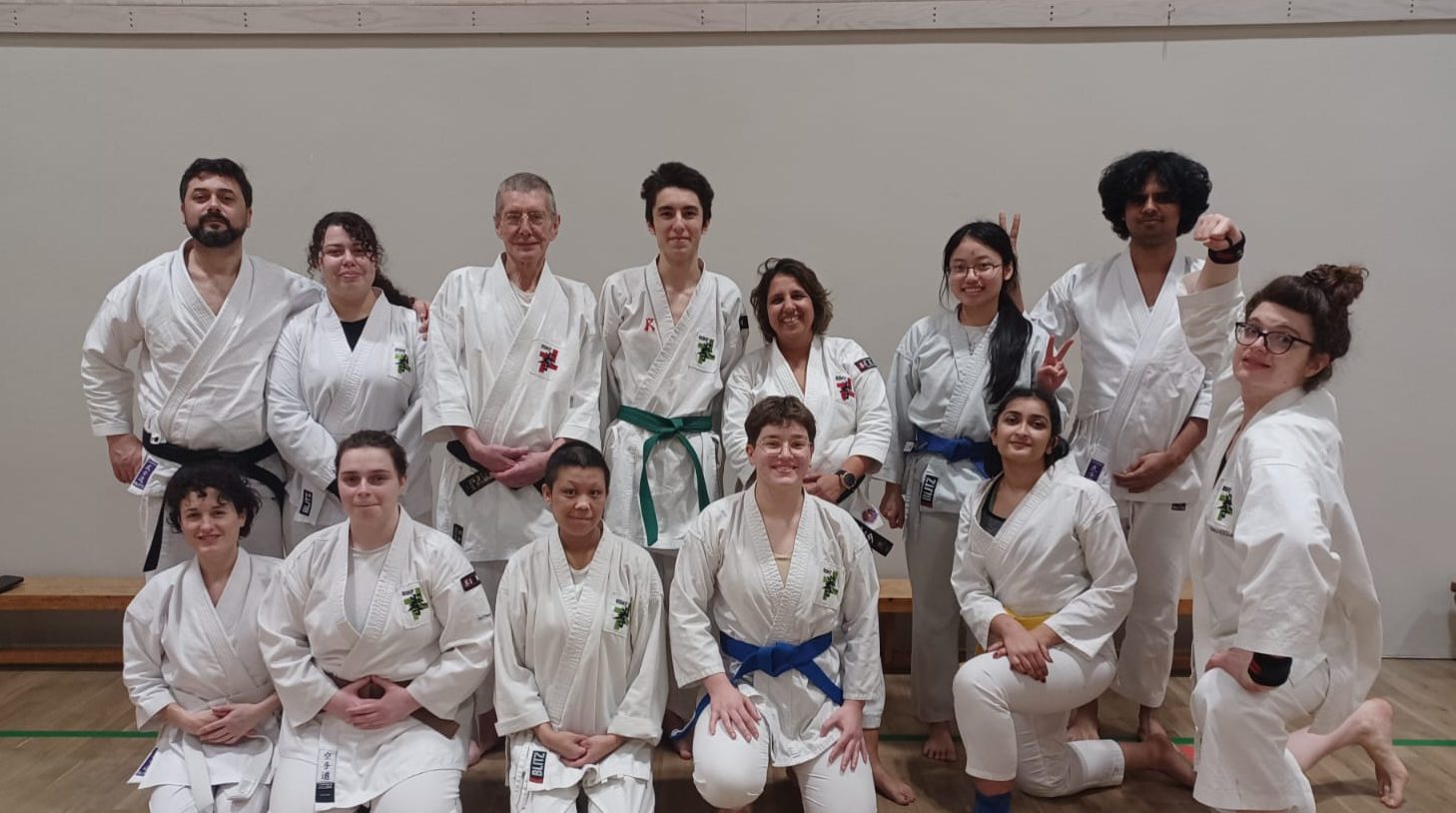Shorinji Kempo teaches practical self-defence, fitness training and meditation practices.
Here in Camden, we practice a modern Japanese martial art called Shorinji Kempo. Our martial art uses both ‘hard’ strikes (punches or kicks) and ‘soft’ grappling techniques. It is a combination of Karate, Jujitsu, Aikido all wrapped up in Buddhist philosophy. Sounds unique? That is because it is and it is worth giving it a go.
As part of training, we also practice shouting (ki’ ai) at an attacker to teach you how to find your voice in any situation. Shorinji Kempo also incorporates restorative techniques (seiho) and seated meditation (zazen), to help with mindfulness.
What Sets Us Apart
Practical Self-Defence: Learn effective techniques through a structured system which will help protect you
Fitness Training: Improve your physical fitness and coordination
Mindfulness Practices: Enhance your mental well-being and focus
Supportive Community: Join a welcoming and inclusive community of like-minded individuals including young people, the LGBTQIA+ community and female martial artists.
All Shorinji Kempo classes centre on respect and cooperation – it’s never a competition! At Camden Shorinji Kempo we always aim to create a safe and encouraging environment even as we learn how to shout, punch and kick.
How to Punch or Kick -The Five Elements of Atemi
There are five key aspects of which allow you to effectively land that punch or kick. These are broken down here as: Aim, Distance, Angle, Speed and Tactics. When we train, we want to ensure that all five are present in your fighting style. If any one element is missing then Shorinji Kempo would consider it a weak attack.
To understand how to aim, you have to both know – and then successfully hit – specific weak points (kyushu). We attack these sensitive points in order to stop an attacker, but not permanently damage them. The weak points are listed in the BSKF syllabus. What isn’t documented is the angle, which varies from pressure point to pressure point.
What distance you adopt depends very much on your own body type. If you are diminutive (like Sensei Kavita) you will need to attack and defend from a different distance than a taller person. In most cases, your opponent is unlikely to match your body type, so you need to adapt to them too. Distance is a whole subject in its own right (under a heading called ‘Ma-ai‘ which will always sound like regional cocktail to Kavita).
Another topic for later is kyojitsu – it just wouldn’t be fun if we told you all the tactics without coming to class …
When it comes to speed, the faster you can attack while maintaining accuracy, the better your strike will be.
The Three Elements of Ken (Putting your skills together)
In all walks of life, to effectively progress you need goals, resources and the ability to execute your aims. This is also the case for practicing self-defence; you need a strategy and techniques which are built on foundational skills. In Shorinji Kempo and other Japanese martial arts they are referred to as;
Gi (skill) – The foundational skills that allow you to land your punch or kick.
Jutsu (application) – grouping together the skills to make up a technique.
Ryaku (strategy) – knowing when to apply a particular technique in your situation.
It is often the fusing of these three things that make you gasp when you watch a great fight scene in a film.
Go Ju Ittai
All our best techniques combine hard aspects (a punch or kick) with softer techniques such as throws that use the attacker’s weight against them.
Kumite Shutai
An important part of our training is the community that we create together. Part of making that happen is through training in pairs. Your grading partner, embu partner or that random training partner who shows up just once, can all provide insights to improve your techniques. Shorinji Kempo is designed in such a way that you will learn it best when
training with others.
Heijo shin (Calm Mind)
Having a calm mind in a stressful situation allows you to react. You don’t want to freeze. “Those who can maintain a composed state of mind, no matter what shocks or changes they meet, have a great advantage” so it is said in the fabled Shorinji Kempo pink book.
At Camden we practice regular stress training as one-way to build resilience and become immune from confusion and inability to act when we are over come from fear or freeze when danger appears.
This state of ‘ordinary’ calm is known as heijo shin. The “mental muscle” to maintain heijo shin is known as tanryoku and is an aspect of ki strength. Mastering techniques and improving both your physical and mental health through Kempo can help develop heijo shin.
You are always welcome at Camden Shorinji Kempo. All you need to bring is a bottle of water, some comfortable gym clothes, and an open mind.
